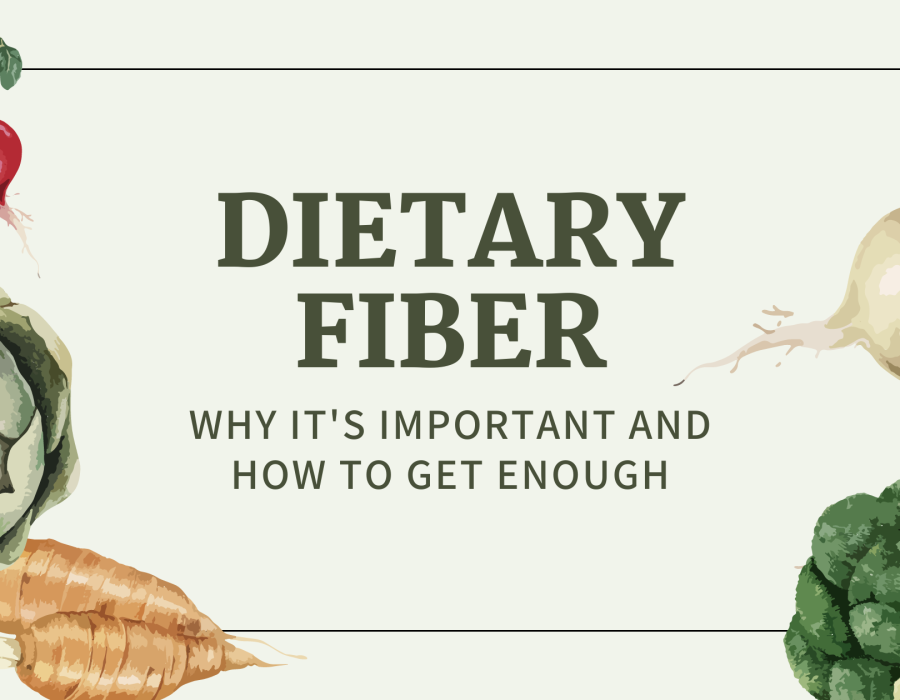Dietary fiber is an essential component of a healthy diet that is often overlooked. It plays a crucial role in maintaining various aspects of our health, from digestive function to heart health. This blog will explore the importance of dietary fiber and provide practical tips on how to ensure you're getting enough in your daily diet.
What is Dietary Fiber?
Dietary fiber, also known as roughage, is the part of plant foods that our bodies can't digest or absorb. Unlike other food components such as fats, proteins, or carbohydrates, fiber passes relatively intact through our stomach, small intestine, and colon, and out of our body. Soluble and insoluble forms are the two types to get dieteary fiber.
- Soluble Fiber: Turns into a gel-like substance when dissolved in water. It can reduce cholesterol and blood sugar levels. Foods high in soluble fiber include oats, peas, beans, carrots, citrus fruits, apples, barley, and psyllium.
- Insoluble Fiber: Promotes the movement of material through your digestive system and increases stool bulk, which is beneficial for those who struggle with constipation or irregular stools. Whole-wheat flour, wheat bran, nuts, beans, and vegetables like cauliflower, green beans, and potatoes are good sources of insoluble fiber.
Why is Dietary Fiber Important?
Improves Digestive Health:
Fiber softens and makes your feces heavier and larger. Constipation is less likely to happen when the stool is thicker and easier to pass. Because fiber absorbs water and gives the stool volume, it may assist to stabilize loose, watery stools.
Helps Maintain a Healthy Weight:
You'll probably eat less and feel fuller for longer periods of time because foods high in fiber are generally more filling than foods low in fiber. Foods high in fiber typically require more time to consume and are less "energy dense," meaning they contain fewer calories per unit of food.
Lowers Cholesterol Levels:
Low-density lipoprotein, or "bad," cholesterol levels can be lowered by soluble fiber, which is present in beans, oats, flaxseed, and oat bran. This can help reduce overall blood cholesterol levels. Additionally, research has indicated that eating foods high in fiber may lower blood pressure and inflammation, among other heart-healthy advantages.
Controls Blood Sugar Levels:
Fiber, especially soluble fiber, can assist lower blood sugar levels in diabetics by slowing the absorption of sugar. Insoluble fiber from a balanced diet rich in insoluble fiber may help reduce the risk of type 2 diabetes.
Reduces the Risk of Some Cancers:
There is some research that suggests a high-fiber diet may help prevent colorectal cancer. Eating foods high in fiber can also reduce your risk of heart disease and type 2 diabetes.
How to Get Enough Fiber in Your Diet
- Eat More Whole Grains: Choose whole grain products over refined ones. Opt for whole-grain bread, pasta, and cereals. Quinoa and brown rice are rich and good providers of fiber.
- Include a Variety of Fruits and Vegetables: Aim for at least five servings of fruits and vegetables each day. Broccoli, oranges, carrots, apples, berries, and broccoli are very high in fiber.
- Incorporate Legumes: Beans, lentils, and peas are not only high in fiber but also rich in protein and other essential nutrients. Toss them with salads, stews, and soups.
- Snack on Nuts and Seeds: Almonds, chia seeds, flaxseeds, and sunflower seeds are fiber-rich snacks that can be easily included in your diet.
- Add Fiber Supplements if Necessary: If you're struggling to get enough fiber from food alone, consider fiber supplements such as psyllium husk. It's usually preferable to obtain nutrients through meals first, though.
- Hydrate Well: When adding more fiber to your diet, it's important to drink a lot of water. Fiber works best when it absorbs water, which results in soft, thick stools.
Tips for Increasing Fiber Intake Gradually
- Start Slow: Give your digestive system time to adjust by progressively increasing the amount of fiber in your diet.
- Mix Fiber Sources: Incorporate a mix of soluble and insoluble fiber to get the full range of benefits.
- Read Labels: Check food labels for fiber content. A food with 5 grams of fiber or more per serving is considered high in fiber.
- Plan Meals: Plan your meals and snacks around high-fiber foods to ensure you’re consistently hitting your fiber targets.
Conclusion
Dietary fiber is a vital part of a healthy diet that contributes significantly to overall well-being. From promoting healthy digestion to reducing the risk of chronic diseases, the benefits of fiber are extensive. By incorporating a variety of fiber-rich foods into your daily diet an d making gradual changes, you can enjoy the many health benefits that fiber has to offer. Start today by making small changes to your eating habits, and you'll be on your way to a healthier, more balanced diet.
Ready to improve your diet and boost your health with more fiber? Consult with a professional Nutrition Counsellor to create a personalized plan that fits your lifestyle. Take the first step towards better health today!





Comments